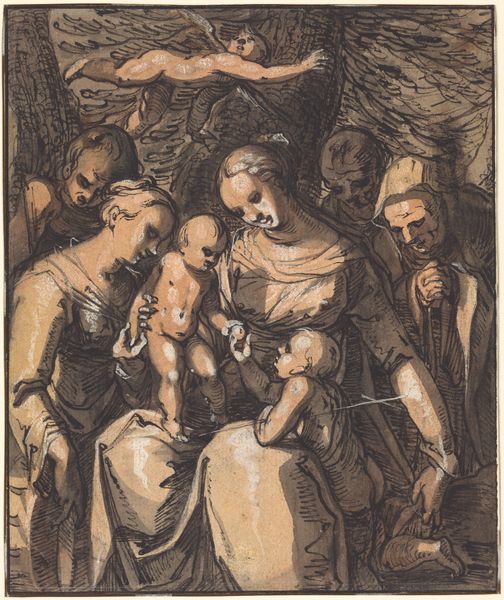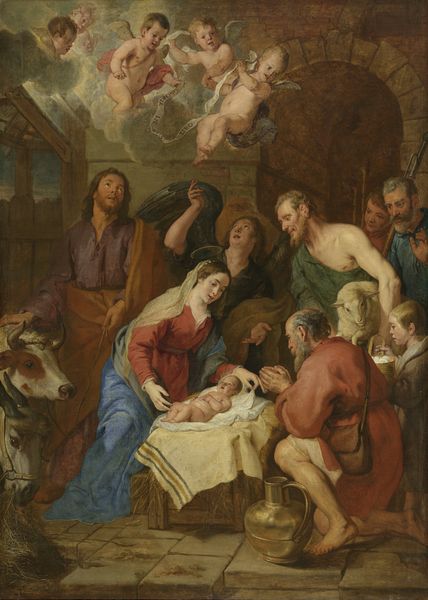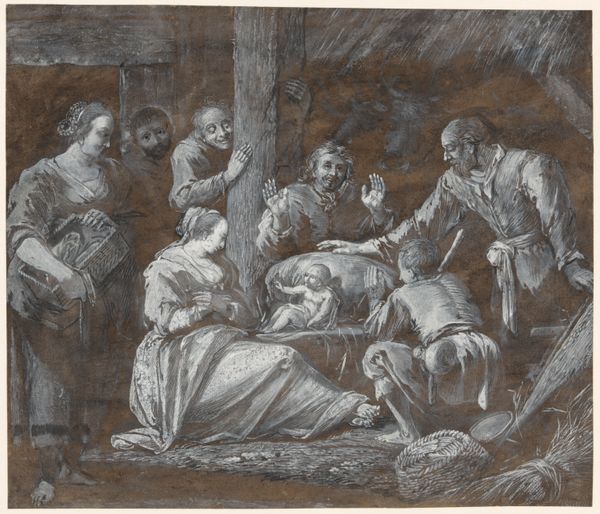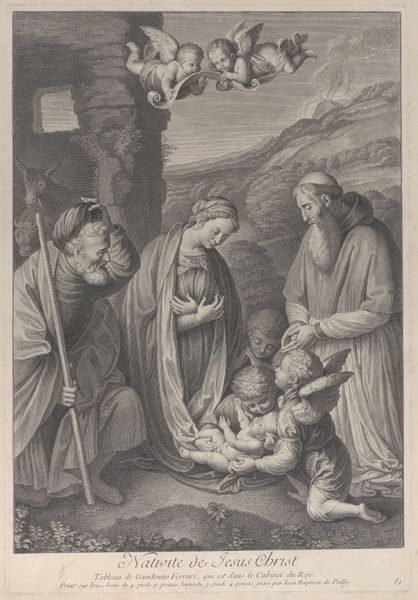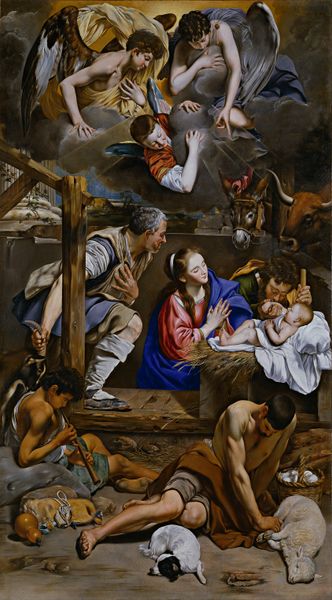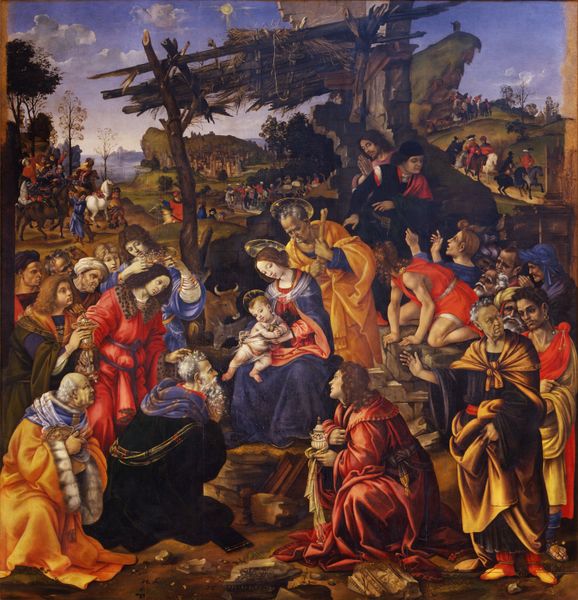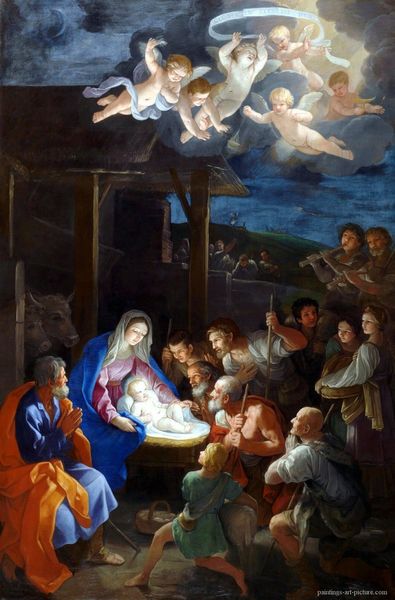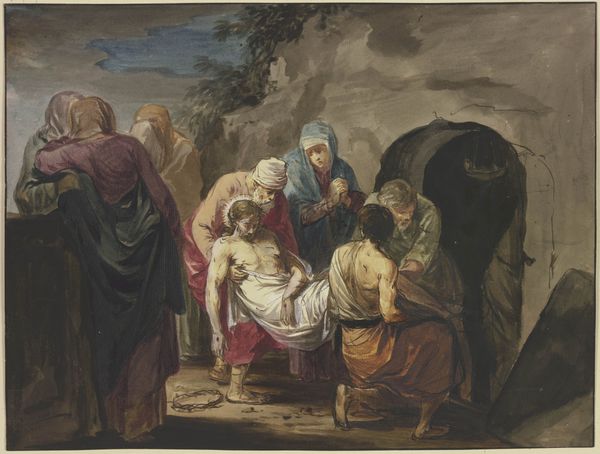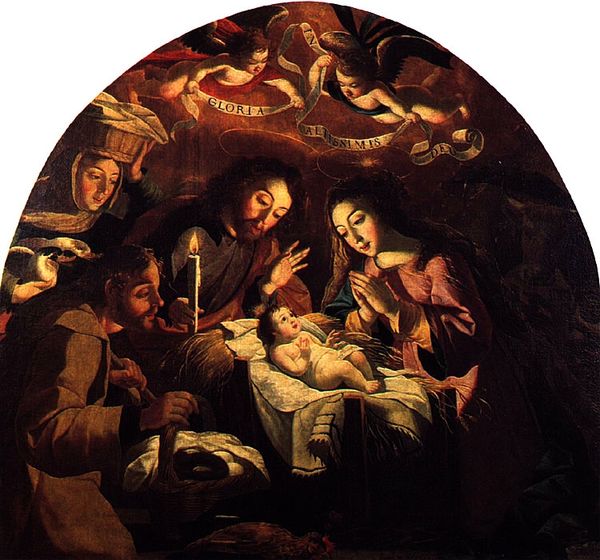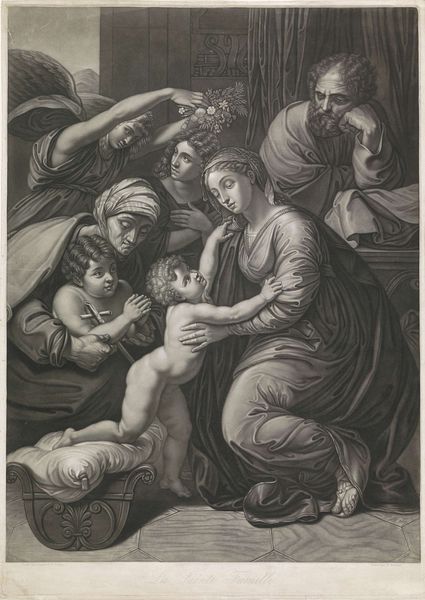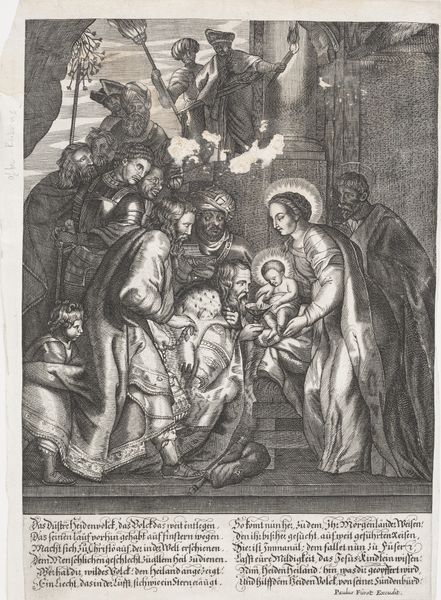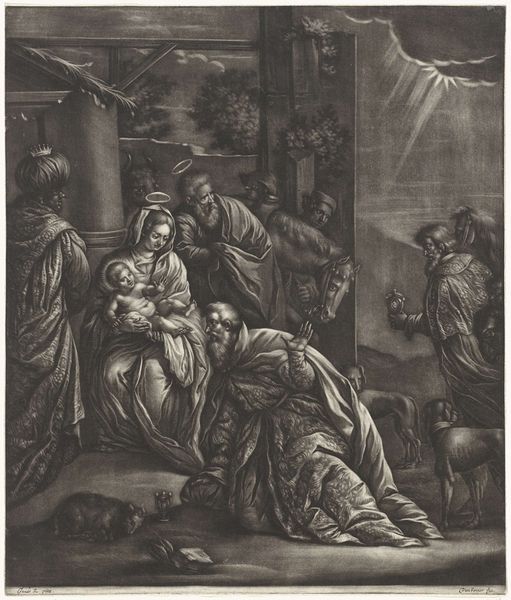
painting, oil-paint, ceramic
#
narrative-art
#
baroque
#
painting
#
oil-paint
#
ceramic
#
figuration
#
oil painting
#
naive art
#
decorative-art
#
portrait art
Dimensions: 7-1/4 x 5-5/8 in. (18.4 x 14.3 cm)
Copyright: Public Domain
Curator: Here we have Adam Friedrich von Löwenfinck's "Adoration of the Shepherds," created between 1741 and 1744. It’s rendered in oil paint on a ceramic plaque, part of the decorative arts collection here. Editor: The first thing that strikes me is how tender the scene is. Even though the colors are quite rich and saturated, there’s an intimacy created by the tight composition and the faces gathered so closely around the Christ child. Curator: Absolutely. And its placement on a ceramic plaque complicates its interpretation. The work almost takes on a unique presence— blurring the distinction between art object, artifact, and cultural commodity in the service of a devotional object for private use. Editor: It does, doesn't it? Ceramics, historically, often carry connotations of domesticity and everyday life. Using it as the canvas lends a kind of unassuming humanity to the divine scene portrayed, echoing the humility inherent in the Nativity story itself. What stands out to me is how the poses of the shepherds allude to figures from older paintings and classical sculptures – echoes of inherited motifs within a modern context. Curator: Indeed. Notice how Löwenfinck takes visual cues from Baroque conventions, infusing it all with his own distinctive style. It shows the increasing social function of imagery where pre-existing images gain power in novel public art encounters and interpretations through repeated use. The politics of display become key here in how different publics are meant to encounter this work. Editor: It speaks volumes about the Baroque period’s penchant for emotional intensity, for engaging the viewer on a profoundly personal level through accessible narratives, filtered through symbolic interpretation. And on ceramic, which has unique emotional reverberations… Curator: Its original presentation would certainly influence reception and meaning. I wonder how it was originally exhibited or used; and whether it served as a secular, religious or even decorative art function. Editor: Reflecting on Löwenfinck's choice of both subject and material truly deepens one’s sense of the visual echoes, symbolic interpretation, and private experiences connected to it. Curator: Yes, considering its potential function as a more accessible mode for experiencing biblical stories makes me consider how its social context impacts it today in our museums.
Comments
No comments
Be the first to comment and join the conversation on the ultimate creative platform.
